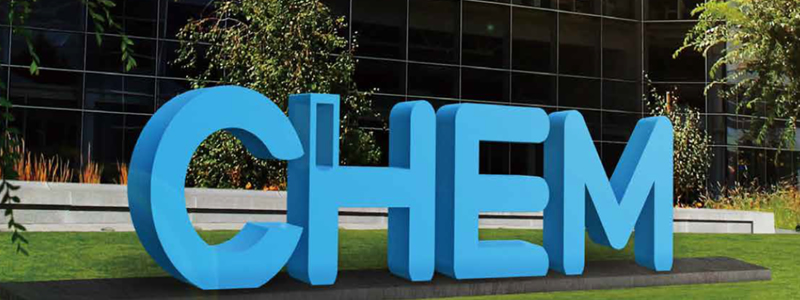
The properties of polyelectrolytes in solution
PHYSICOCHEMICAL PROPERTIES of polyelectrolytes (PolyDADMACs, PAAs)
The properties of polyelectrolytes in solution are determined by the electrostatic interaction between the charged groups in the chain and the low-molecular-weight ions in the solution. The strong electrostatic field generated by the charges in the polyelectrolyte has a significant effect on the structure of the molecule, that is, it substantially alters the macromolecular conformations; with increasing degree of dissociation, the effective size of the chains (end-to-end distance, hydrodynamic radius, etc.) increases, and the coiled molecules straightens out reaching an approximately linear, stick-like shape at high degrees of polyelectrolyte dissociation.
The physicochemical properties undergo considerable alteration when the degree of dissociation changes. For example, the solution viscosity can increase by a factor of a hundred or more depending on the polyelectrolyte concentration in solution, its degree of dissociation and the free ion (salt) concentration (low-molecular-weight ions in the solution).
The theory that was developed for solutions of low-molecular-weight electrolytes is not valid for polyelectrolyte solutions. The low-molecular-weight ions that appear during the dissociation of polar groups of the polyelectrolytes create a diffuse counter-ion cloud around the oppositely charged surface of the polymers. Its composition (solvation) and size influences the structure and dynamics of polyelectrolytes in solution as well as the swelling capacity and visco-elastic response of polyelectrolyte gels.
Charged molecular chains commonly present in soft matter systems have a noticeable effect on the structure, stability and the interactions of various (biological) molecular assemblies. Theoretical approaches to describe their statistical properties differ profoundly from those of their electrically neutral counterparts. Many biological molecules are polyelectrolytes. For instance, polypeptides and DNA’s are polyelectrolytes.
Keywords: polyelectrolytes, PolyDADMACs, PAAs
For more information or Inquiry, about PolyDADMACs and PAAs, please contact us: TIAN@CHEM.NET
 Previous
Previous  Next
Next Get answers and advice from people you want it from.